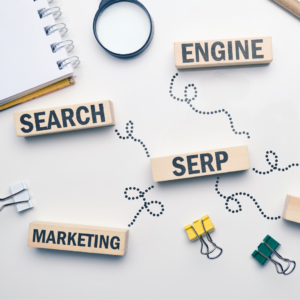Running a retail store isn’t just about keeping shelves stocked or greeting customers. It’s about strategic planning for retail store management, which means making smart decisions that can turn your store into a well-oiled machine. Whether you’re a Marketing Manager, Sales Manager, Store Manager, or Business Owner, this guide will help you understand how planning can improve your store’s success. And if you’re ready to take things to the next level, don’t forget to check out the Data Analytics for Retail Store Management Course to master the art of data-driven decision-making and gain a competitive advantage.
Introduction to Strategic Retail Planning
Strategic planning, involving a structured strategic planning process, is like a map for your store. Without it, you’re just guessing and hoping for the best. It helps you understand where your store is today, where you want it to go, and what steps you need to take to get there. It’s not about making quick decisions; it’s about creating a long-term plan that leads to success.
For example, a store manager who plans strategically will not only focus on today’s sales but also think about how to bring in more customers next month. Strategic planning gives you the tools to grow your business and avoid the headaches that come with poor decisions.

Understanding the Retail Business Environment
Understanding the retail business environment is crucial for developing an effective strategic retail planning process. The retail industry is constantly evolving, with changing consumer behaviors, technological advancements, and shifting market trends. To stay competitive, retailers must be aware of the internal and external factors that impact their business.
Internal factors include the company’s strengths, weaknesses, opportunities, and threats (SWOT analysis). Conducting a SWOT analysis helps retailers identify areas for improvement, capitalize on opportunities, and mitigate threats. For instance, a retailer might discover that their strength lies in customer service but their weakness is in inventory management. This insight allows them to focus on enhancing their inventory systems while leveraging their strong customer service to build loyalty.
External factors encompass market trends, consumer behavior, competition, and economic conditions. For example, understanding that consumers are increasingly shopping online can help a retailer develop an e-commerce strategy. By staying informed about these external factors, retailers can develop a strategic retail plan that addresses the needs of their target market and stays ahead of the competition.
Key Steps in the Strategic Retail Planning Process
Here’s a simple step-by-step guide to building a strong retail planning strategy:
Identifying market opportunities: The first step is to look around and see what’s happening in the market. Are there customer needs that are not being met? Could you be offering something different? Understanding the market is the foundation for setting goals.
Setting realistic goals: Once you know your market, it’s time to set goals. What do you want to achieve in the next 6 months? How about a year from now? Make sure your goals are realistic and measurable, like increasing sales by 20% or attracting 50 new customers each month. SMART goals should be aligned with the company’s overall mission, vision, and strategic objectives.
If you’re feeling stuck, check out our Data Analytics for Retail Store Management Course to get valuable insights on how to use data to make smarter, more informed decisions.
Setting SMART Goals and Objectives
Setting SMART (Specific, Measurable, Achievable, Relevant, and Time-bound) goals and objectives is essential for developing a strategic retail plan. SMART goals provide a clear direction for the business and help retailers focus on what needs to be achieved. By setting SMART goals, retailers can:
Increase sales and revenue: For example, setting a goal to increase sales by 15% over the next quarter.
Improve customer satisfaction and loyalty: Aiming to achieve a customer satisfaction score of 90% within six months.
Enhance operational efficiency and productivity: Reducing order processing time by 20% in the next three months.
Expand market share and competitiveness: Launching a new product line to capture 10% of the market share within a year.
Improve profitability and return on investment (ROI): Increasing ROI by 25% through cost reduction and revenue enhancement strategies.
SMART goals should be aligned with the company’s overall mission and vision and communicated to all stakeholders, including employees, customers, and suppliers. This alignment ensures that everyone is working towards the same objectives, fostering a cohesive and motivated team.

Tools for Retail Store Management
The best way to take control of your store’s future is by using retail analytics. Merchandise financial planning is crucial for aligning financial goals with procurement and sales strategies. This means gathering information like customer shopping habits, sales patterns, and inventory turnover, then using it to make decisions that improve your store.
For instance, retail analytics can show you which products are flying off the shelves and which ones are collecting dust. It can also tell you when is the best time to order more stock. These store management tools take the guesswork out of running a business.
To get started with data analytics, explore our dedicated course on analytics for retail to learn how numbers can boost your store’s efficiency.
Challenges in Strategic Planning
No plan comes without its challenges, and retail management is no different. Some of the most common roadblocks include:
Lack of data: Not having enough information about your customers or products can make it difficult to plan effectively. However, tools like retail analytics can help fill in these gaps. Analyzing past historical sales data can also provide valuable insights for more accurate forecasts.
Resistance to change: Store managers and teams can sometimes resist new ideas. However, strategic planning means being open to new methods and technologies, like using data analytics to help make better decisions.
These challenges may seem daunting, but they’re easy to overcome with the right knowledge and tools. Check out our data courses for more tips on how to handle these hurdles.
Best Practices for Implementing Strategic Plans
Here are a few best practices for putting your strategic plan into action:
Start small: Don’t try to change everything overnight. Focus on one or two areas where you can make immediate improvements, like improving inventory management to help meet customer demand more effectively or adjusting store hours.
Measure your success: Once you’ve made changes, track your progress. Are sales improving? Are customers coming back more frequently? Regularly measuring your results helps you see if your plan is working or if adjustments need to be made.
Learn from others: Successful retailers often share their stories online. Reading case studies from businesses that have used strategic planning can help inspire your own approach. And if you’re looking for extra guidance, our data analytics course provides real-world examples of success.
Analyzing Performance and Iterating
Analyzing performance and iterating is a critical step in the strategic retail planning process. Retailers must regularly review their performance data to identify areas for improvement and make adjustments to their strategy as needed. This includes:
Monitoring sales and revenue growth: Tracking sales data to identify trends and areas for improvement.
Tracking customer satisfaction and loyalty metrics: Using surveys and feedback to gauge customer satisfaction and loyalty.
Analyzing operational efficiency and productivity metrics: Reviewing processes to identify bottlenecks and inefficiencies.
Evaluating market trends and competitor activity: Staying informed about industry trends and competitor strategies.
Assessing the effectiveness of marketing and advertising campaigns: Analyzing campaign performance to determine ROI and areas for improvement.
By analyzing performance data, retailers can identify areas for improvement and make data-driven decisions to optimize their strategy and improve results. This iterative process ensures that the strategic retail planning process remains dynamic and responsive to changing conditions.

Creating an Execution-Ready Strategic Plan
Creating an execution-ready strategic plan is the final step in the strategic retail planning process. This involves developing a comprehensive plan that outlines the company’s goals, objectives, and strategies for achieving success. The plan should include:
A clear mission and vision statement: Defining the purpose and direction of the business.
SMART goals and objectives: Setting specific, measurable, achievable, relevant, and time-bound goals.
A market analysis and competitive assessment: Understanding the market landscape and competitive dynamics.
A customer analysis and segmentation strategy: Identifying target customer segments and tailoring strategies to meet their needs.
A marketing and advertising strategy: Developing a plan to promote products and attract customers.
An operational plan and budget: Outlining the resources and processes needed to execute the strategy.
A performance monitoring and evaluation plan: Establishing metrics and processes to track progress and make adjustments.
By creating an execution-ready strategic plan, retailers can ensure that their strategy is aligned with their goals and objectives, and that they have a clear roadmap for achieving success. This comprehensive approach to strategic retail planning helps retailers stay focused, organized, and prepared to navigate the complexities of the retail industry.
Future Trends in Retail Store Management
Retail is always changing, and staying ahead means keeping an eye on future trends. Some of the big trends coming up include:
Personalization: Stores that use data to create personalized shopping experiences for customers will have an edge. For example, using data to recommend products based on past purchases.
Omni-channel shopping: Customers want to shop in-store, online, and through apps. Being able to connect all these channels will help retailers meet customer demand.
Effective retail space planning can enhance customer experiences and increase foot traffic.
The future of retail is bright for those who plan ahead. By staying on top of these trends and implementing strategic planning, you can ensure your store stays competitive in the long run.
Conclusion and Call to Action
Strategic planning for retail store management isn’t just for large corporations. It’s something every store manager or business owner should embrace. By following a well-thought-out strategy, you’ll be ready to tackle any challenge and grow your business.
If you’re serious about learning how to apply these strategies to your store, now is the time to take action. Sign up for our Data Analytics for Retail Store Management Course and start planning for a more successful future today!




